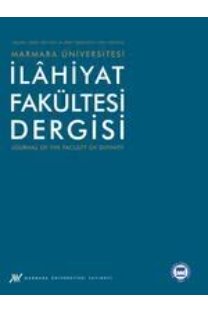Meşhur bir Mektubun izinde:Vezir Tahir b. Hüseyin’in Oğluna nasihatleri
ÖzetBu makale, Abbasî halifesi Me’mûn’un (v. 218/833) veziri Tahir b. Hüseyin’in (v. 207/822), halifetarafndan Rakka ve Msr valisi olarak atanan olu Abdullah’a (v. 230/844) yazd mektup çerçevesindegelien baz metinleri konu edinmektedir. slamî dönem Arap edebiyatnn siyasî mektupliteratürünün ilk metinlerinden birisi olan bu metin, “idarecinin sahip olmas gereken matlupnitelikler ile idaresini dayandrmas öngörülen temel dinî/ahlakî ilkeleri” ele alan nasihatnâmeeserlerinin de ilk örneklerinden saylmaktadr. Bu çalmada mektubun yazld siyasî ve fikrîortama dair baz deerlendirmelerde bulunulmakta, mektuba telif, erh ve tercüme vesilesiylemüdahil olan ahslarn hayat hikayeleri ele alndktan sonra mektubun Osmanl eyhülislâmDamadzâde Ahmed Efendi (v. 1154/1741) tarafndan yaplan Arapça erhinin tahkikli nerineyer verilmektedir.Anahtar Kelimeler: Vezir Tahir b. Hüseyin, Siyasi mektup, nasihatname, Damadzade Ahmed.AbstractThis paper analyzes a famous letter—and its commentaries—penned by Tahir b. al-Huseyin (d.207/822), the vizier of the Abbasid Caliph Ma’mun (d. 218/833) to his son Abdullah (d.230/844) on the occasion of latter’s appointment as the Governor of Raqqa and Egypt. The letteris not only one of the earliest examples of political/diplomatic letters in the Islamic-Arabic literature,but it also is considered among the very first examples of nasihatnâme literature, the preferreddefinition of which is “the necessary qualifications of a ruler and the basic religious/moralprinciples of administration”. The essay offers some remarks on the political and intellectual settingsof the letter; in addition, it sheds some light on biographies of a later commentator of theletter and the translator of this commentory. Finally, we provide the critical edition of the Ottomanscholar Damadzâde Ahmed Efendi’s (d. 1154/1741) Arabic commentary on the letter.Key Words: The Vizier Tahir b. al-Husain, diplomatic letter, nasihatnama, Damadzadah Ahmad.
Anahtar Kelimeler:
Vezir Tahir b. Hüseyin, Siyasi mektup, nasihatname, Damadzade Ahmed
- ISSN: 1302-4973
- Başlangıç: 1963
- Yayıncı: Marmara Üniversitesi
Sayıdaki Diğer Makaleler
Hasan el-Basrî’nin Kader Risalesinin Tefsir İlmi açısından Değerlendirilmesi
Bir Muhaddis-Sûfînin Rüyaları: İbn Ebi Cemre ve Merai'l-Hisan'ı
Onaltıncı Yüzyılda Şa'rânî ve Mısır Toplumu
ŞEYHUL iSLAM EBUSSUUD EFENDİ VE MEKANETUHU Fİ'L-LUĞATİ VE'L-EDEB
Mehmed Âkif Ersoy Hakkında yapılmış Doktora ve Yüksek Lisans Tezleri
Sünnî Fıkıh mezheplerinin teşekkülü
Christopher MELCHERT, Christopher MELCHERT, Nail OKUYUCU
Katolik Kilisesi’nin Modern Dünyaya Uyumu: II. Vatikan Konsili ve Katoliklerin Yakla
Ye’s ve Be’s Halinde İmanın Hükmü: Firâvun’un İmanı Örneği
Aydınlanma sorununa giriş denemesi
Meşhur bir Mektubun izinde:Vezir Tahir b. Hüseyin’in Oğluna nasihatleri
